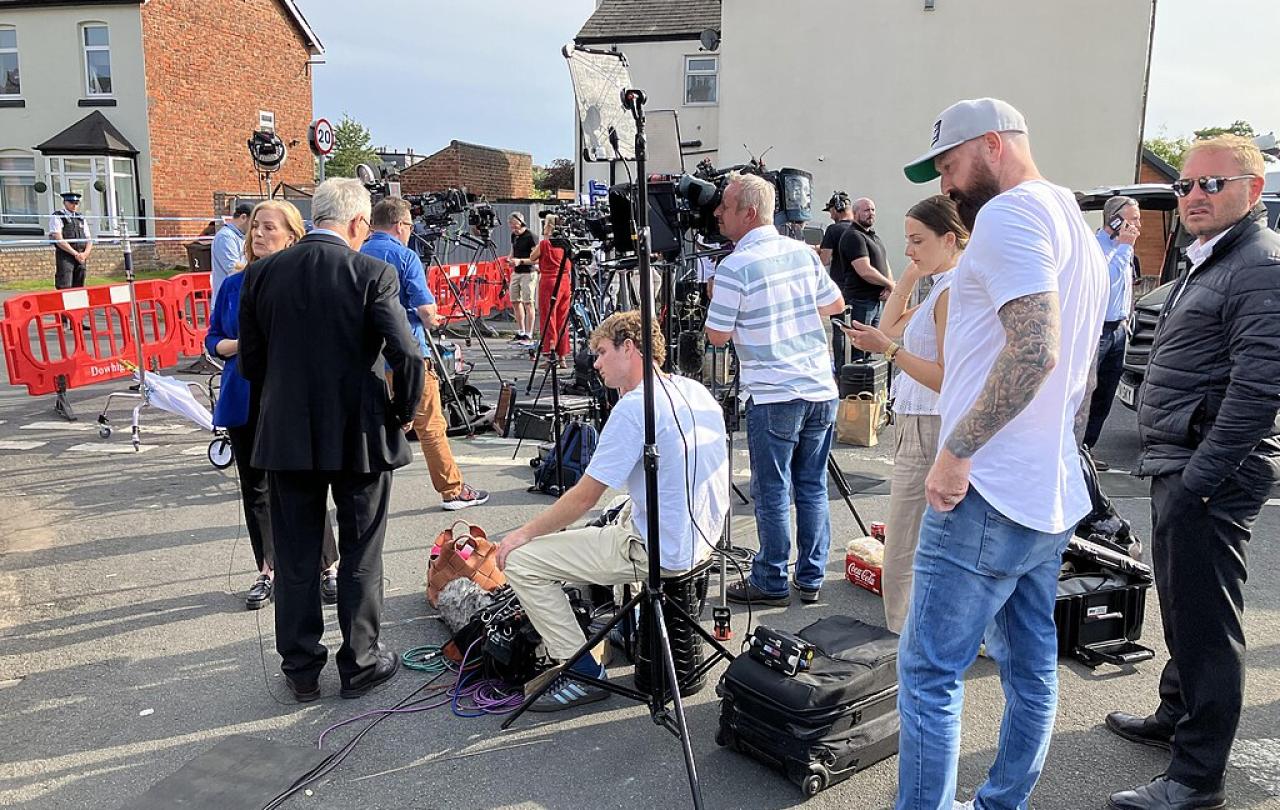
Picture the scene: you’re outside running an errand; maybe you’re taking the bins out or cleaning your car in the street. The sun is blazing and you’re in a great mood. Bolstered by the good weather, you start to sing to yourself. Maybe you’ve got Spotify on or the car radio’s playing. Just as you’re getting your groove on to Gaga, someone comes up behind you, about a foot away and joins in with the song . . . Startled, you stop singing and swing round to see the other half of your unsolicited duet.
The other person also stops and says: ‘Hello, did I frighten you?’ Clearly concerned, you back away towards your house. The person continues: ‘Wait, wait, please don’t run away.’ As you dash through the front door and slam it behind you, you hear your uninvited singing partner pick up the song where the two of you left off in an attempt to serenade you as you flee.
They never made a Snow White 2. Maybe that’s because watching the slow and agonizing breakdown of a relationship that was entered into prematurely isn’t very ‘Disney’.
Menacing, right? No one’s stopping to swap numbers with the creepy crooner. Except this is the exact interaction between Snow White and Prince Charming in the Disney film (1937). Word for word. I sat through it to check. Did she call the police? Was she embarrassed and uncomfortable with his invasion of her personal space? Did she drop a message to the other princesses to tell them to watch out for the crackpot future king? None of the above. The next time we hear her speak about the prince, Snow White is talking to the seven dwarfs and explaining that she’s ‘in love with him’, he’s ‘the only one’ for her and ‘there’s nobody like him anywhere at all’. Those are actual quotes.
When the prince and Snow White are finally reunited, she is woken from her unconsciousness by his kiss and he leads her away, wordlessly, into the sunset. In the whole film Snow White doesn’t say a word directly to the prince.
They never made a Snow White 2. Maybe that’s because watching the slow and agonizing breakdown of a relationship that was entered into prematurely isn’t very ‘Disney’. I, for one, would pay to watch as Snow White grows to realize that marrying someone who looms up on young women and breaks into song isn’t all it’s cracked up to be; and as the prince gets fed up with all the woodland creatures leaving their droppings as they traipse through the house to help with all the various daily chores.
Now this is key so listen up: there is no ‘the one’ and you do not have a ‘soulmate’.
The relationships we saw as children to model our hopes and dreams on were fundamentally flawed and Disney was at the heart of what I will be calling from here on in ‘The Great Deception’. In our treasured childhood films feelings of love didn’t grow from a deep and mutual understanding of who the other was. It was an encounter that sparked love at first sight, followed by some questionable courtship practices. It’s a sinister day in the magical kingdom when you realise Belle was a hostage with Stockholm syndrome; Ariel changed her species and gave up her voice in order to gain favour with the prince; and Sleeping Beauty was given a non-consensual kiss while unconscious.
We know all these are fairy stories, but the material we surround ourselves with has a tendency to stick, no matter how impervious we believe ourselves to be. Somewhere between Cinderella’s pre-midnight Waltz and Aladdin and Jasmine’s market stall encounter we fell for the idea that instant attraction is preferable to that which builds and develops more slowly over a longer period of time. The reality is that some of the best, most fulfilling relationships don’t kick off with irrepressible feelings of chemistry. In some cases, that chemistry wanes over time and in others it develops with greater engagement.
That said, those of us who are conscious that a pretty face or a banging body aren’t all they’re cracked up to be when contributing to a lifetime-length relationship, do forget that attraction is still important. The best depiction of a healthy attraction I’ve heard is Will van der Hart’s on The Dating Course. He compares a relationship to a church candle – one of those fat pillar ones. The attraction is the wick; you need it to get the thing going. But if you’re all wick, you’ll burn out quickly. The wax is the substance, the friendship, the deeper understanding of each other, the experiences you share. But if you’re all wax, you can’t get the flame going. However, if you have both, you’ve got a candle that will burn brightly and for a long time.
Another glug of Kool-Aid that Snow White had guzzled down was this idea of ‘the one’. Now this is key so listen up: there is no ‘the one’ and you do not have a ‘soulmate’. Neither of those things exist. Mr/Mrs Right is not out there. Get on with your life.
The entertainment conglomerate has done its best in recent years to repent for the generations of young girls with unrealistic romantic expectations.
Back in the ancient days of Athens, Plato shared some questionable insight into the origin of humans. Turns out, way back when, people had four legs, four arms and a head with two faces. Zeus, despite being king of the gods, was afraid of what these eight-appendaged, double-faced people could do, so he split them down the middle. Humans, now incomplete, walked the earth pining for their other half, throwing their arms around each other and intertwining their bodies in an attempt to grow together. In summary, the idea of a missing person to complete you is not founded on any scientific or biblical truth. It’s misinformation from Plato and Jerry Maguire. It is not a great premise to build your life and expectations on. It’s a waste of time.
What someone should have told Walt was that there are a number of people Snow White would meet in her life who would be a suitable marriage partner for her. She would have a different but fulfilling life with each. A person would become ‘the one’ when she chose to commit to them, because she would be making a promise to them to eliminate all others from the equation. Leaving just one.
The entertainment conglomerate has done its best in recent years to repent for the generations of young girls with unrealistic romantic expectations. They’ve produced a slew of powerful and sassy women, out for adventure with no love interest in sight; see Moana and Raya and the Last Dragon. But for myself and my millennial peers, the stage has already been set. If he doesn’t rock up on a valiant steed, quite frankly, we’re not interested.





